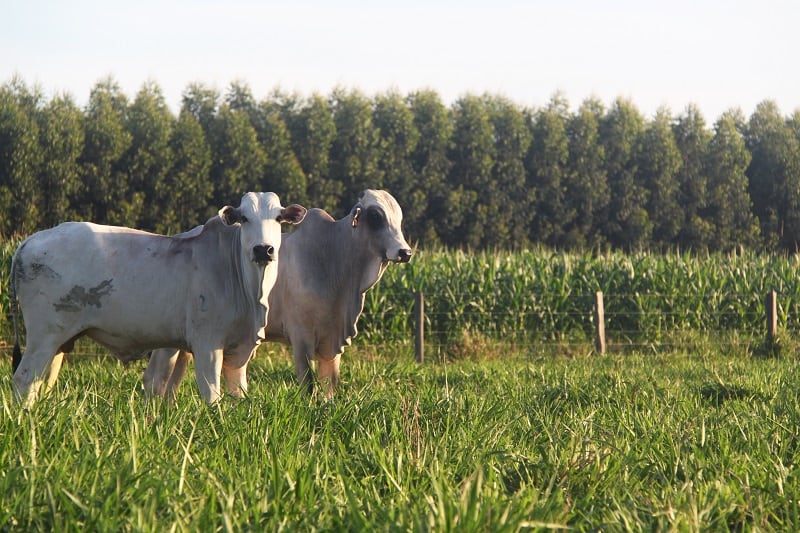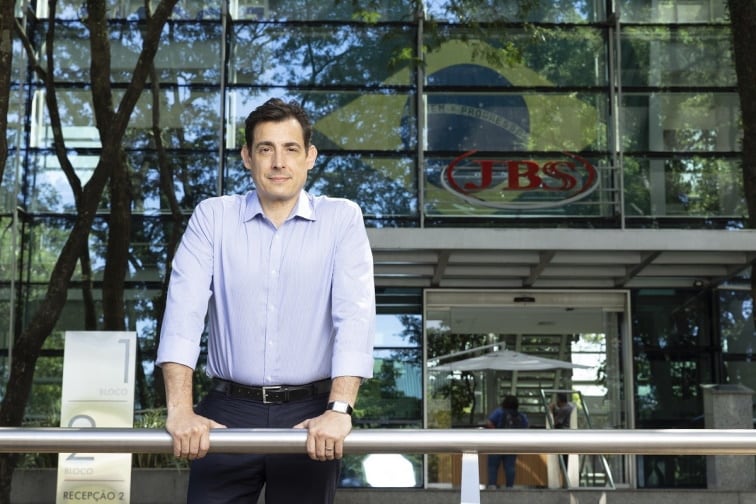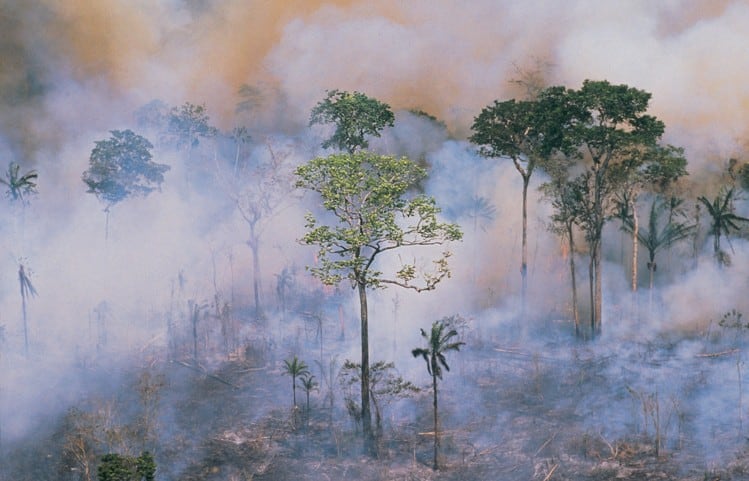"We're always explaining ourselves,” shrugged Andre Nassar, President of the Brazilian Association of Vegetable Oil Industries, as he sat back and exhaled.
The biggest players in Brazil’s agri-food sector are clearly increasingly frustrated at what they describe as misconceptions about the country in Europe: the deforestation, the supersized climate emissions, the heavy pesticide use, the exploitation of land and its indigenous groups. All accelerated under the watch of far-right firebrand President Jair Bolsonaro.
Brazil spent 40 years transitioning from a food importer to exporter. That effort is now at risk. Take the move last year by European supermarkets to stop selling some or all beef products originating in Brazil over concerns of links to deforestation in the Amazon rainforest. The country’s agri-food sector wants to set the record straight.
European hypocrisy?
“We have to try and de-couple [from] this perception and recover consumer trust,” continued Nassar in a press briefing. He accused the agricultural sector in Europe, meanwhile, of amplifying these misconceptions “because they see Brazil as a competitor”.
The deforestation issue, for one, is murky. JBS, the Brazilian meat giant regularly accused of indirectly sourcing cattle from illegally deforested areas, insists it is leveraging technology to identify malpractice in what are deep and complex supply chains.
“We're convinced perceptions [in Europe] are not what they should be,” added Christian Lohbauer, president of CropLife Brasil, an association of agrochemical companies. “We don't deny the problems this country has but we are convinced our food production is sustainable.”
How? Brazilian agriculture continues to innovate and develop new methods of sustainable farming, said Celso Moretti, president of Brazil’s Agricultural Research Corporation, Embrapa. "Back in the 1970s we imported beef from Europe, milk from the US and beans from Mexico,” he revealed. “But because we invested in science and technology, in less than five decades we developed a science-based tropical agriculture sector without paralleled in any other part of the world. You won’t find a similar transformation in other tropical belt countries.”
It is this rapid science-based innovation which forms the bones of Embrapa’s contention that Brazil is well placed to produce more, while using less land. Brazil now feeds 800 million people, exporting more than 300 different products to over 200 countries, the group claims. Around a third of its territory is used for agriculture and forestry exploitation, while over 66% of the country’s total area remains occupied by native vegetation, it says.
In contrast it estimates the European Union uses 64.7% of its territory for agriculture; US 74.3%. There are therefore more cries of hypocrisy from Nassar. "If Europe is concerned about deforestation, we are concerned about other things in Europe such as the GHG footprint. We have a big stock of native vegetation within farms, 35% of the soy bean farms in the Cerrado region is native vegetation. I think it would be very difficult to find in Europe farms that are setting aside 35% of the area for native vegetation. We need to show we have a lot of carbon stocks in our farms that Europe doesn't have.”
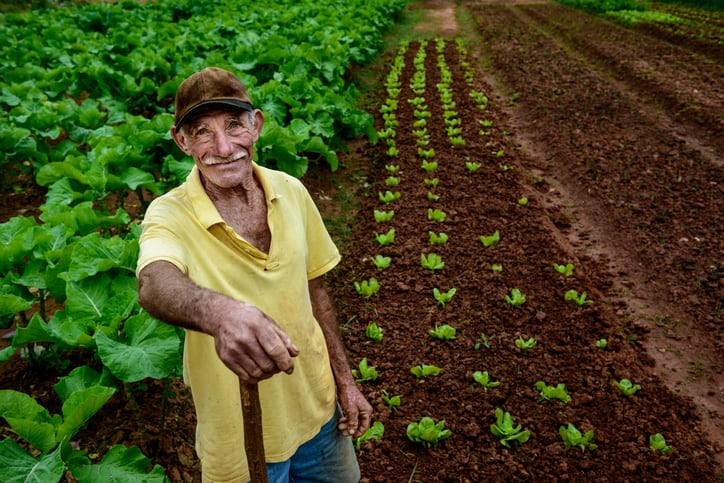
Increasing production 'without touching the Amazon'
Low carbon agriculture is helping Brazil to mitigate GHG emissions, producers in the country claim. In 2011, the Brazilian government launched the National Plan for Low Carbon Emission in Agriculture (ABC Plan), which aims to encourage the adoption of more resilient techniques, with greater productive gains and low carbon emission by rural producers.
One method is recovering degraded pasture. Embrapa estimates Brazil has 90 million hectares of degraded pastures, which can be converted for agriculture thus resulting in a high capacity to increase production without opening new areas of native vegetation.
“Using technology that we already have, we can convert degraded pasture into agriculture,” said Moretti. “We are not talking about opening up new areas for production or deforestation. We are talking about converting pasture that is already there but degraded into agriculture and we have the technology to do that.
“We have problems with wildfires and illegal deforestation,” he admitted, “but it's very clear we do not need to cut a single tree in the Amazon or the rainforest to convert into agriculture. We have areas far away from the Amazon that we can convert for agriculture.”
Low impact agriculture for productivity gains
Other low carbon techniques include no-till farming, used for growing crops or pasture without disturbing the soil in order to lock away carbon. This is used in Brazil on around 35 million hectares a year.
Many Brazilian farms have also embraced a system of crop rotation – harnessing the country’s natural fertility and warm, humid climate – to grow two complementary crops in the same year. The most common example is soy and corn. This approach reduces pesticide use, weeds and fosters greater soil sustainability.
Thanks to this method, between 1980 and 2020, Brazil increased grain production by 406%, while the areas planted grew by under 65%. Productivity gains measured in tons per hectare between 1995 and 2020 for soybeans were 40.32% and for corn was 133.21%. The soybean crop grew significantly, with an area expansion of 302.46%. This expansion did not take place in former rainforests, but rather in the centre of the country, Brazilian agricultural experts have stressed.
Integrated crop, livestock and forestry (ICLF) is another production strategy that integrates agriculture, livestock and planted forests in varying combinations. Research conducted in various regions in Brazil has indicated these systems contribute to the preservation of soil quality, water conservation, better animal performance by increasing thermal comfort, and mitigation of the effects of greenhouse gasses.
Ebrapa claims that land area now occupied by ICLF in Brazil now stands at 17 million hectares in the 2020/2021 crop, up from just 1.87 million hectares in 2005. It further claims that between 2010 and 2015 the increase of 5.96 million hectares of ICLF was responsible for the sequestration of 21.8 million tons of carbon dioxide equivalent. The technique can potentially be used in up 48 million hectares, the group estimates, especially with the incorporation of unproductive areas, such as the degraded pastures.
Another tool, Biological Nitrogen Fixation, involves infusing crops with micro-organisms which extract nitrogen from the air, dramatically reducing the need for nitrogen fertilizers. It can be applied to a wide range of crops, including soybeans, sugarcane, corn, cowpea, rice and wheat. According to Embrapa, it has been highly effective at helping to recover environmentally degraded farms, where the unsustainable use of the soil has resulted in the loss of organic matter and productivity in soil.
It has been applied to over 10 million hectares of farmland in the past 10 years, says Embrapa, and has helped to reduce the agricultural production of CO2 equivalent by some 27 million tons. Under the ABC Plan, the aim is to apply this technology over 13 million hectares of farmland by 2030. Embrapa has calculated growers saved around 7.5 billion USD on nitrogen fertilisers thanks to the technique.
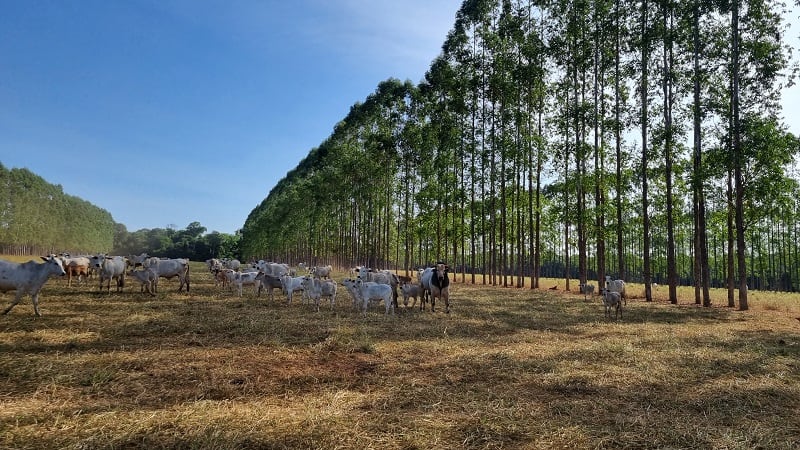
The need to accelerate uptake
Take up of these techniques among growers and farmers isn’t going entirely to plan, however.
Some ABC Plan targets, for integrated farming systems and no-till production, have been met. But they have fallen short in other areas, such as meeting rehabilitation of degraded pastureland and re-forestation targets.
Moretti remains confident the cutting-edge agronomic systems can still be scaled, helping Brazilian farms to improve their productivity, lower emissions and restore native vegetation.
"The low carbon agricultural plan is a good example of how we are moving fast in terms of decarbonising and mitigating climate change," he insisted. "It's a big opportunity but it’s still not happening in the size or the amount we would like to see."
Initial costs can be a barrier for farmers and growers. You have to wait 6-7 years for the trees to grow if you’re using ICLF, for example. Subsidised financing in the form of lower interest rate loans are however on offer.
The country is of course shouting about this to protect its commercial interests here in Europe and strengthen the Brazil brand. The biggest players in Brazil’s agri-food sector admit, however, that continuing to adapt supply chains will increase prices for end consumers. That begs the question, if shoppers aren't prepared to pay more, is there a risk Brazil will therefore become less competitive because of the investment in sustainability?
"Yes,” said Nassar, “but it's also a risk if we say 'Europe doesn't need our products, we have other markets to sell in.’”


